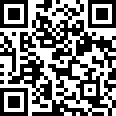(This is an excerpt from an article about anti-counterfeiting labels. Let me share with you and learn this knowledge together.)
1. Production efficiency and printing cost
The printing process and the post-processing process of the embossing process are mostly produced, and the printing methods such as offset printing , gravure printing, screen printing, digital inkjet printing, and the processing combination of cold-hot and die-cutting processing equipment can be realized. The production is provided from the feeding to the die-cutting into a finished product, and the production efficiency is high and the printing cost is low. Sheet-fed offset labels are generally printed first and then processed into finished products one by one. Therefore, the production cycle is longer and the corresponding printing cost is higher.
2, drying speed and drying effect
When printing on the ground, the embossing machine generally adopts a UV curing method, which has a fast drying speed and a good drying effect. For example, the Sun's satellite rotary presses are equipped with a set of UV curing devices. When printing a large area of the field, the operator can increase the amount of ink, so that the printed ink layer is thick and textured. The ordinary sheetfed offset printing machine does not have a UV curing function, and the ink after printing cannot be dried immediately. Therefore, when printing a large area on the ground, if the ink layer is thick, it is likely to cause stickiness and poor drying of the ink.
3, mesh printing
When the screen is printed, the offset printing is more excellent, and the transition from the flat net to the absolute net changes naturally; while the embossing performance is poor, when the transition from the flat net to the absolute net, the area ratio of the dot is about 3%. A network disconnection occurred. However, with the rapid advancement of the embossing direct plate-making technology, the embossing achieves no breakage of the dot area ratio from 1% to 99%.
4, plastic surface printing
Glue printing is a relatively special printing method for embossing technology, and currently, offset printing machines do not cover this method. The so-called rubber surface printing is to peel off the bottom paper of the self-adhesive material before printing, and then print on the "glue surface" with adhesive, and then combine the bottom paper with the bottom paper, and finally in the self-adhesive material. The surface material continues to be printed and finished. This type of printing is technically demanding and requires a unit with a backing function on the embossing. Generally, the rubber surface printing is printed on the “glue surface” and then printed on the front side. Therefore, the first few units of the embossing machine should be converted into a squeegee printing unit. In addition, you should also pay attention to the problems of overprinting, printing pressure control, and material flatness when printing on both sides.
5. Anti-counterfeiting effect
The printing machine with any combination of embossing and screen printing, gravure printing and offset printing can realize the complementary advantages of various printing processes on one label, making the label more exquisite and more anti-counterfeiting. The author believes that the label printed on the combination printing machine is quite difficult to copy. If the counterfeiter wants to use a single printing method to falsify the label printed by the combination printing press, then the secondary tracking problem must be handled, otherwise the overprinting error will occur and the original label cannot be reproduced.

 Ms. Bear
Ms. Bear
